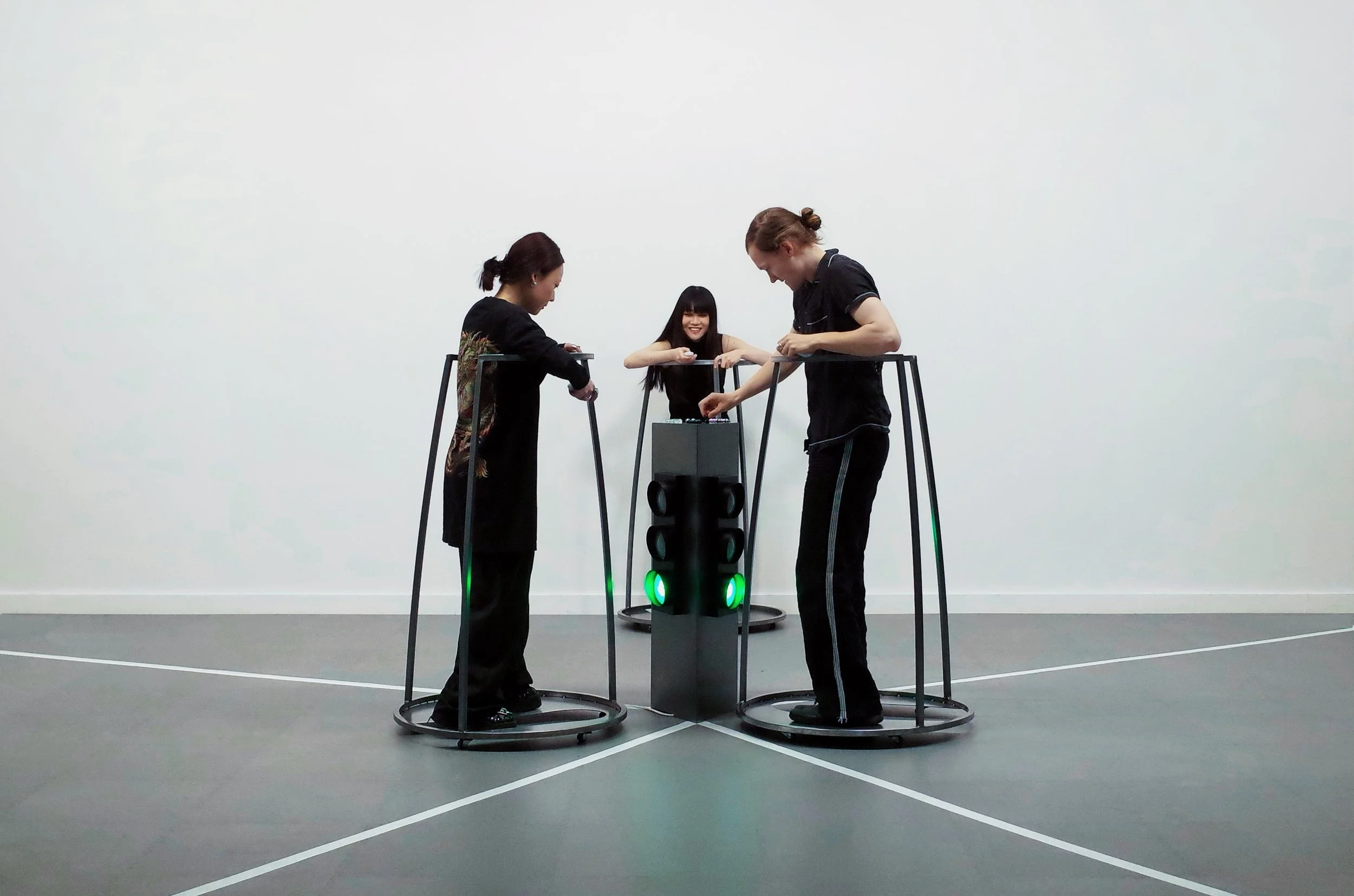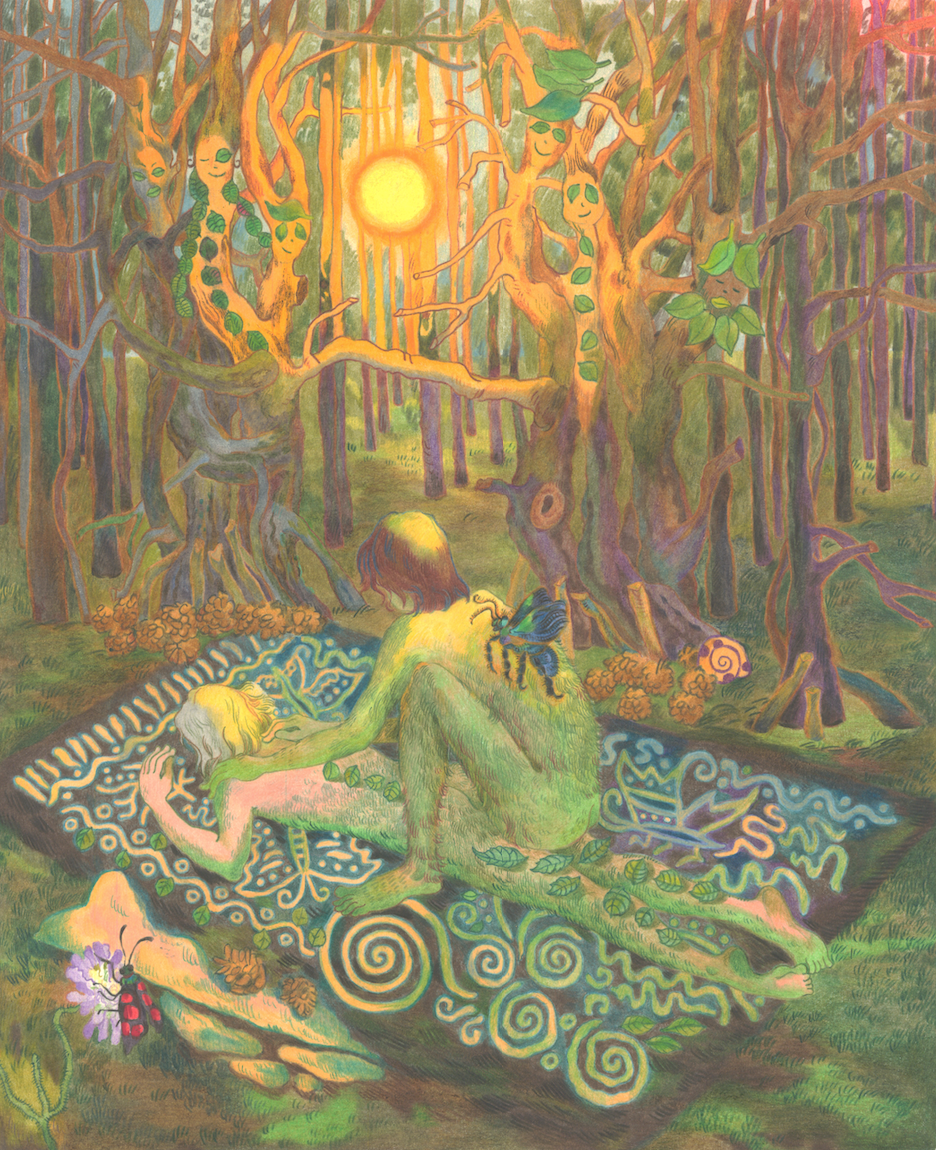10 Questions with Lisha Liang
Al-Tiba9 Art Magazine ISSUE15 | Featured Artist
Lisha Liang (b. 1994) is an alumna of the Academy of Fine Arts in Florence, Italy, where she graduated with distinction. Currently pursuing a Ph.D. at the esteemed University of Bologna, Italy, Liang's multidisciplinary practice spans performance, installation, sculpture, video, photography, and painting.
Lisha Liang's artistic journey has been marked by numerous exhibitions and group showcases across China and Italy. Her notable recognitions include being featured in the "99 Future Blue Chip Artists" publication by Artsted (January 2024), "222 Artisti emergenti su cui investire 2024" by Exibart Edition (October 2023), and achieving finalist status in the Exibart Prize 2022/23 (June 2023) and Exibart Prize 2021 (June 2022). Liang's contributions have also been acknowledged through participation in prestigious events such as the Arte Laguna Prize 17th Edizione in Venice, Italy (March 2023), and the III Rea Art Fair held at Fabbrica del Vapore in Milan, Italy (October 2022).
Lisha Liang - Portrait
ARTIST STATEMENT
Lisha Liang's artistic endeavors are deeply rooted in the exploration of gender dynamics and the pervasive issue of gender-based violence. Motivated by a growing concern for these societal challenges, Liang's work serves as a conscientious reflection and an invitation to engage with the feminist discourse. Her artistic inquiries extend into critical examinations of sex education and the complexities surrounding domestic violence.
In Liang's view, contemporary art acts as a poignant mirror to society's inquiries: What can we do to make tomorrow a better day? How do we effectively communicate and raise awareness about the issues that shape our collective experiences? Through her art, Liang endeavors to provoke contemplation and inspire meaningful dialogue on these pressing matters.
Spring, Performance, Video recording, 15', 2021 © Lisha Liang
Al-Tiba9 Art Magazine Original ISSUE15
INTERVIEW
First of all, let's talk about your background. Could you tell us a little more about yourself and how you began making art?
Experience the discomfort inherent in society and the environment. It's as if these discomforts penetrate the air around us. People breathe in these discomforts constantly, their bodies reacting with unease. I set out to identify and express these discomforts, and in doing so, I uncovered themes such as gender inequality entrenched in society, the pervasive influence of patriarchal social constructs, and the urgent desire for gender equality both in concept and practice.
You originally come from China, but you are now living in Italy, where you studied and are currently enrolled in a PhD program. In your opinion, how has relocating to Italy shaped your artistic journey and perspective? Do you find it influenced your practice at all?
Going to Italy was the beginning of my artistic journey. Over the span of 5 years, I immersed myself in Florence, studying at the Academy of Fine Arts, driven solely by the boundless inspiration derived from the act of creation. My academic trajectory, underscored by my graduation from the Academy of Fine Arts in Florence and my current pursuit of a Ph.D. at the University of Bologna, has profoundly influenced both my personal evolution and artistic exploration. The choice to pursue further education stemmed from the recognition that while art practice can wield superficial impact, unearthing deeper layers demands a bedrock of theoretical and social research.
Spring, Performance, Video recording, 15', 2021 © Lisha Liang
Your multidisciplinary practice spans performance, installation, sculpture, video, photography, and painting. How do you navigate between these diverse mediums, and what influences your choice of medium for a particular project?
In my artistic practice, I view various forms of expression as tools to articulate my ideas. The choice of materials and forms is contingent upon their capacity to effectively convey the conceptual underpinnings of my art projects. This deliberate selection is driven by a nuanced understanding of how each medium contributes to the overall narrative. Furthermore, the evolution of my creative themes follows a trajectory of consistency and gradual deepening. I anticipate that this trajectory will naturally incorporate new materials and elements, serving as integral components in the ongoing development of my artistic language. The dynamic interplay between different media forms an essential aspect of this evolution, enabling a richer exploration of the boundaries that exist between them. This deliberate crossing of boundaries not only enhances the expressive potential of my work but also challenges the conventional distinctions between various artistic mediums.
Gender dynamics and the issue of gender-based violence are central themes in your art. What motivates you to explore these topics, and how do you approach them in your artistic practice?
My collective pain from women led me to explore these themes. Through immersive dialogues with individuals, extensive information gathering, and a thorough analysis of the prevailing social landscape, I embark on a reflective journey. These methods serve as crucial tools for me to distill my thoughts. Subsequently, I articulate my opinions and seek out a fitting form of artistic expression to convey them. In essence, my practice becomes a conduit for translating these profound reflections into tangible, visual narratives. Each piece becomes a vessel for sharing not only my personal experiences but also a broader commentary on societal challenges. It is through this intersection of personal introspection, dialogue, and artistic expression that I aim to catalyze awareness, provoke thoughtful discourse, and contribute to the ongoing dialogue surrounding gender issues.
Whisper, Performance, 2018 © Lisha Liang
The feminist discourse is also central to your work and critical investigation. How do you hope your art contributes to the ongoing conversation surrounding gender equality and violence prevention?
As a pro-feminist artist, I hope my art can contribute to the ongoing conversation around gender equality and violence prevention. Through my artwork, I hope to shine a light on the reality of gender inequality and violence and make people aware of the seriousness and prevalence of these issues. Through sharp or gentle forms of artistic expression, the audience can resonate emotionally with people's daily feelings and experiences, allowing them to have a deeper understanding of the importance of gender equality and the impact of violence on victims. I hope to stimulate dialogue and debate among audiences, raise social awareness levels about gender equality and violence prevention, and drive social change.
By cooperating with different institutions and organizations on topics such as gender equality and violence against women, we will promote people's attention to these topics. My artwork will be dedicated to advocating for change in gender equality and violence prevention, calling on governments, social organizations, and individuals to work together to take practical action to address these issues.
Likewise, through my artwork, I also hope to provide support and encouragement to victims so that they feel they are not alone, while inspiring others to become actively involved in supporting gender equality and violence prevention.
To sum up, I hope that my art can make a positive contribution to the ongoing dialogue around gender equality and violence prevention and advance society by revealing reality, evoking resonance, promoting dialogue and awareness, advocating for change, and supporting victims towards greater justice and equality.
In your artist statement, you mention contemporary art as a mirror to society's inquiries. How do you believe art can effectively communicate and raise awareness about societal issues?
As a mirror of society, contemporary art has important responsibilities and roles. It can effectively communicate and reflect the current reality in a variety of ways, and raise awareness of social issues.
Artists explore social issues with their unique perspectives and innovative ways, break through traditional cognitive frameworks and boundaries through artistic works, and help people transcend inherent thinking patterns and more comprehensively recognize and understand social reality. There are also many artists who actively advocate social change and justice through their works, calling people's attention to social injustice, environmental issues, human rights and other issues, inspiring people to take action, and promoting society to develop in a more equitable and harmonious direction.
Different art forms can convey emotions and opinions in an intuitive way, touching people's hearts and allowing them to understand more deeply the complexity and depth of social issues, thereby paying more attention and concern to these issues and actively participating in social change. Artworks are often not pure expressions but have symbolic and metaphorical meanings, which can stimulate the audience's thinking and association, promote dialogue and exchanges between people, and promote the discussion and solution of social issues. Provoke thought and conversation. This enables the audience to feel the impact of social issues more deeply, thereby paying more attention and concern to these issues and actively participating in social change.
To sum up, contemporary art can effectively communicate and raise awareness of social issues and contribute to society through expressive forms, triggering thinking and dialogue, breaking boundaries, arousing resonance and emotional resonance, and advocating change and social justice, making important contributions to its development and progress.
Whisper, Performance, 2018 © Lisha Liang
Whisper, Performance, 2018 © Lisha Liang
Participation in events like the Arte Laguna Prize and the III Rea Art Fair has given your work significant exposure. How do you see your role as an artist evolving within the contemporary art scene?
There is no doubt that these recognitions validate the direction and intent of my artistic endeavors. They affirm that my work resonates within the art community and is considered noteworthy by experts and peers. This validation is crucial in providing the confidence and assurance necessary to explore more daring themes and push artistic boundaries. And interacting with other talented artists, curators, and art enthusiasts fosters a dynamic exchange of ideas and encourages me to continuously evolve and refine my own artistic language.
Your work has also been recognized in various publications and exhibitions, including being featured in "99 Future Blue Chip Artists" by Artsted and "222 Emerging Artists to Invest in 2024". How do you feel about these acknowledgments, and how do they impact your artistic trajectory?
I think, on the one hand, I have confidence and recognition. It has served as both validation and motivation, affirming that my work is not only appreciated but considered noteworthy within the contemporary art scene. At the same time, this recognition has allowed me to expand my thematic explorations with a newfound confidence. It acts as a catalyst, encouraging me to delve deeper into the issues and concepts I find compelling. The acknowledgment also brings a sense of responsibility, prompting me to contribute meaningfully to the discourse within the art world. But while being recognized, I am afraid of being coerced by the artistic environment and will only produce works that are in line with the audience's consciousness and aesthetics.
Spring in a cage, installation, concept art, 2017 © Lisha Liang
Looking ahead, what themes or projects are you interested in exploring in the future? Are you working with new technologies, such as VR and AI? Or are you interested in implementing them into your practice?
I am currently researching VR interactive storytelling and women's films, involving VR and AI, and these technologies will also appear in my art projects later.
And lastly, where do you see yourself and your work five years from now? Are you working on any new big project?
In five years' time, I envision my artwork to have matured significantly, with my artistic research yielding fruitful results. My aspiration is for my work to make a meaningful contribution to society.


























